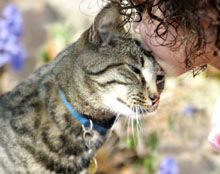 More than likely, you've got a first aid kit in your home in case something happens to someone in your family. And, since all areas are susceptible to disasters, you hopefully may even have a disaster kit prepared if the need arises. At the very least, you have the makings of one in your medicine cabinet: band aids, gauze, hydrogen peroxide, etc. But what about for your pet? Do you have all the supplies that you need in case your pet has some kind of trauma or accident? If not, you've come to the right place as we are going to outline exactly what you need to put together for Fido & Fluffy's First Aid Kit.
More than likely, you've got a first aid kit in your home in case something happens to someone in your family. And, since all areas are susceptible to disasters, you hopefully may even have a disaster kit prepared if the need arises. At the very least, you have the makings of one in your medicine cabinet: band aids, gauze, hydrogen peroxide, etc. But what about for your pet? Do you have all the supplies that you need in case your pet has some kind of trauma or accident? If not, you've come to the right place as we are going to outline exactly what you need to put together for Fido & Fluffy's First Aid Kit.
The Staples
Each pet is different, so there isn't a perfect standard kit that will meet all the needs of your particular little companion. However, the following items will provide a good foundation for you to start your kit. Don't forget to obtain two of everything to keep one at home and one in the car for travel.
- A container large enough to hold of all of these items. It should open and close easily but be secure and water-resistant if at all possible.
- A list of phone numbers including your regular vet, emergency vet, animal control, and animal poison control numbers. It's best to have these pre-programmed in your cell phone as well.
- A muzzle is a good idea for pets that are very injured/afraid, even well-trained pets may bite in these situations, even if they never showed any kind of aggressive behavior in the past.
- Leash
- Extra towels, wash cloths and a blanket
- Ice and hot packs wrapped in a cloth can cool down skin after a burn or keep a pet warm if hypothermic
- Scissors to cut masses that are matted in fur or freeing her from entanglements.
- Tweezers to remove splinters, or other foreign materials from wounds.
- Tick remover tool
- Toenail trimmer
- QuikClot (or a similar product) to stop bleeding.
- Gauze for bandaging or to help stop bleeding.
- Syringe or large eye dropper to flush out wounds or administer fluids by mouth.
- Small bottle of 3% hydrogen peroxide
- Antiseptic wash or wipes
- Ear wash
- Sterile eye wash
- Antibiotic ointment
- Syrup of ipecac to induce vomiting in the event of poisoning.
- Latex or plastic exam gloves in case the situation gets messy.
- Pet first aid book. These items will not be of any use to you if you don't know how to properly use them. Read up and keep this in the kit for quick reference in the event of an emergency.
Additional Items
Depending on your pet, you may need to include more items to complete the kit. If your pet takes medication, be sure to include a few days of the prescription. Is your pet extremely active and takes frequent hikes or outdoor excursions? It's probably a good idea to include something to create a splint (tongue depressor, 12-inch ruler, or thick magazine). Ask your veterinarian for help in customizing a kit that's perfect for your dog.
Go the Extra Mile
Now that you've got your kit built, why not take it one step further and attend a pet first aid and CPR class? Pets obviously need different care and handling than their humans. Check with your veterinarian, community college, or local Red Cross about the availability of classes in your area. Your four-legged family member will definitely appreciate it.
Our blog has even more safety tips and information, including how to keep your pets safe during disasters. And for all of your pet travel needs, don't forget to check out Trips with Pets.